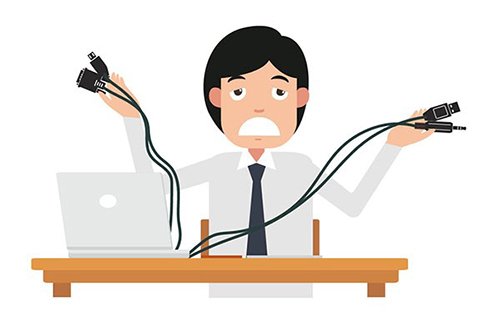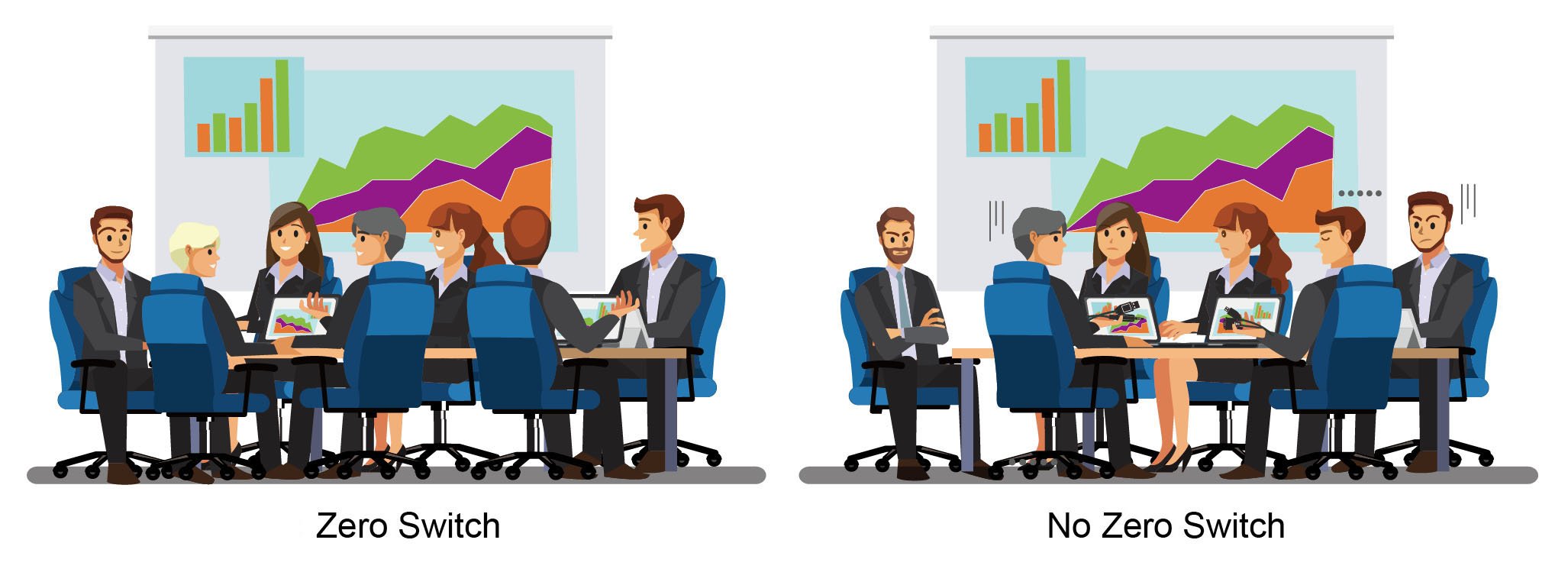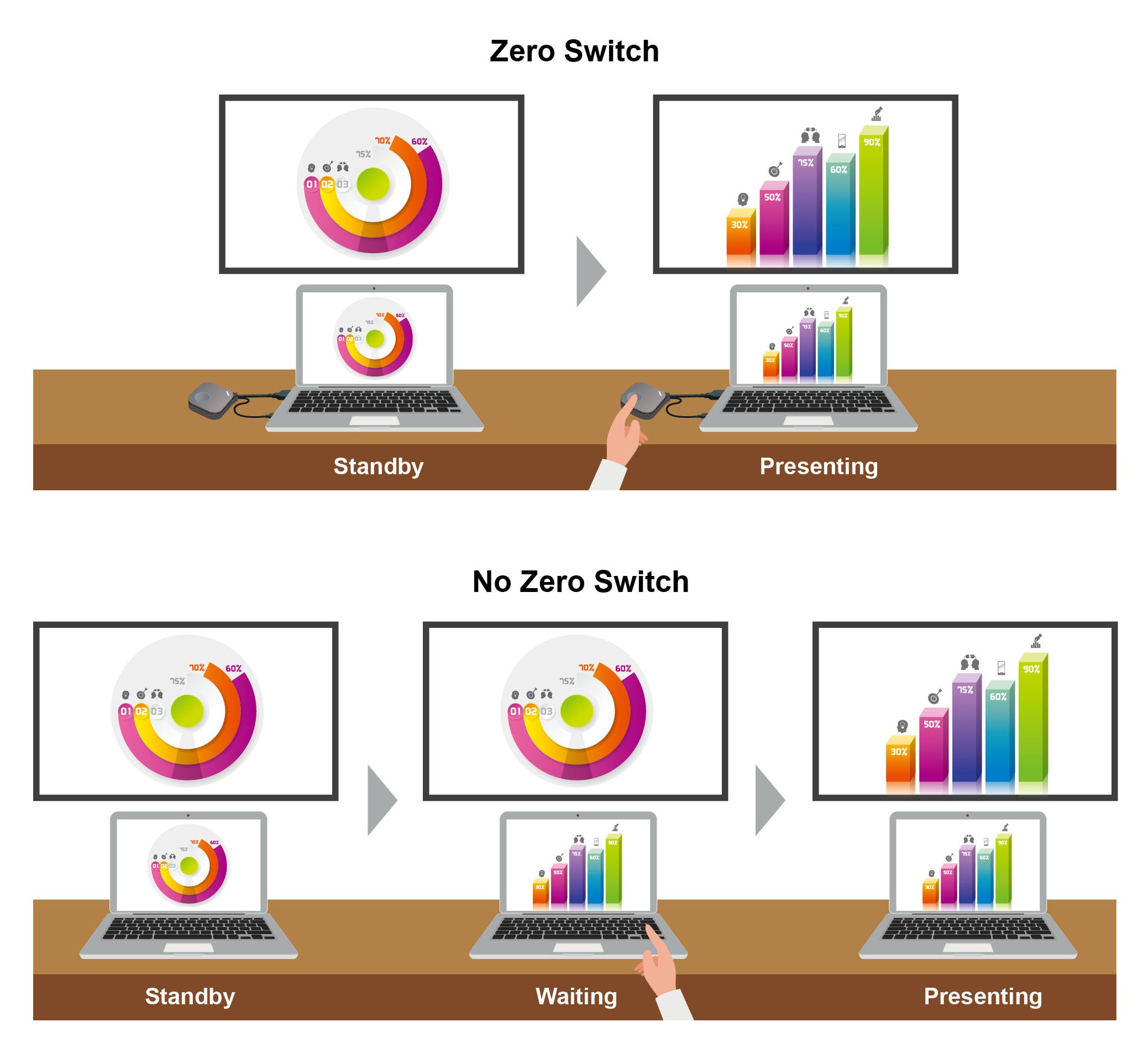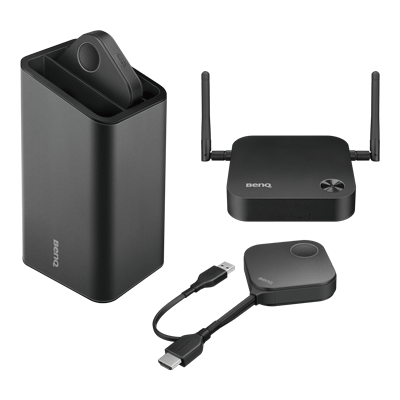Zero Switch for BenQ's InstaShow Wireless Presentation System
- BenQ
- 2019-08-30
With the problem of bottlenecking that was present in early 2.4GHz bandwidth-based wireless transmission being effectively resolved by 5GHz band Wi-Fi, a wide array of conference room users have begun expressing the desire to rid themselves of the cumbersome tools of traditional wired connections, such as LAN, VGA, HDMI, and other cables. At the same time with the widespread use of Bring Your Own Device (BYOD) and wireless technologies already firmly entrenched, the use of Wireless Presentation Systems (WPS) has outgrown the doubts over its applicability and reliability to a point where it is not only an acceptable option for conference rooms but in many cases has become prioritized as a solution.

Figure 1: The Trouble of Wired Projection

Figure 2: The Trend of BYOD
BenQ understands that plenty of meetings in conference rooms that utilize WPS technology (particularly group meetings such as huddle meetings, brainstorming sessions, or weekly reports) involve presentations with multiple presenters who need to constantly switch between their computers, which many times results in unnecessary downtime, the repetition of screens, and/or clumsiness when reverting to a wired connection. The need to decrease these byproducts of WPS use is what led us to develop Zero Switch.

Zero Switch is a technology that BenQ developed for its InstaShow Wireless Presentation Systems. The way Zero Switch works in InstaShow is by using a uniquely designed transmission protocol and an advanced accelerated graphic memory access mode to save a potential presenter’s image/video in their transmitter’s graphic memory while their transmitter is in standby mode (in other words when they are not presenting). Once that presenter presses the button on his or her transmitter to begin their presentation the transmission protocol allows the transmitter to quickly activate its memory to transmit its content to the receiver. After the receiver detects that the incoming content’s resolution matches its requirements, the receiver will refresh the graphic memory chip so that the switch from the current presenter’s content to the 2nd presenter’s content on the conference room’s projector or display will exhibit virtually zero latency. This feature coupled with BenQ’s exclusive mode switch / video mode capabilities allows for seamless transitions, even preventing fast motion video from causing any slowdown in the receiver’s graphic memory. This all makes Zero Switch especially convenient for conferences/meetings with discussions that require switching between multiple presenters at a moment’s notice.

Figure 4: Presenting with Zero Switch vs. with No Zero Switch
In a business environment where BYOD practice has already become an indispensable workplace staple, InstaShow has not only helped shatter the fears IT managers had regarding the unreliability of wireless presentations systems, but has also improved user experience so that conference room users can enjoy presentations that are quicker and more stable than traditional wired presentations.
Figure 4: Presenting with Zero Switch vs. with No Zero Switch
In a business environment where BYOD practice has already become an indispensable workplace staple, InstaShow has not only helped shatter the fears IT managers had regarding the unreliability of wireless presentations systems, but has also improved user experience so that conference room users can enjoy presentations that are quicker and more stable than traditional wired presentations.
